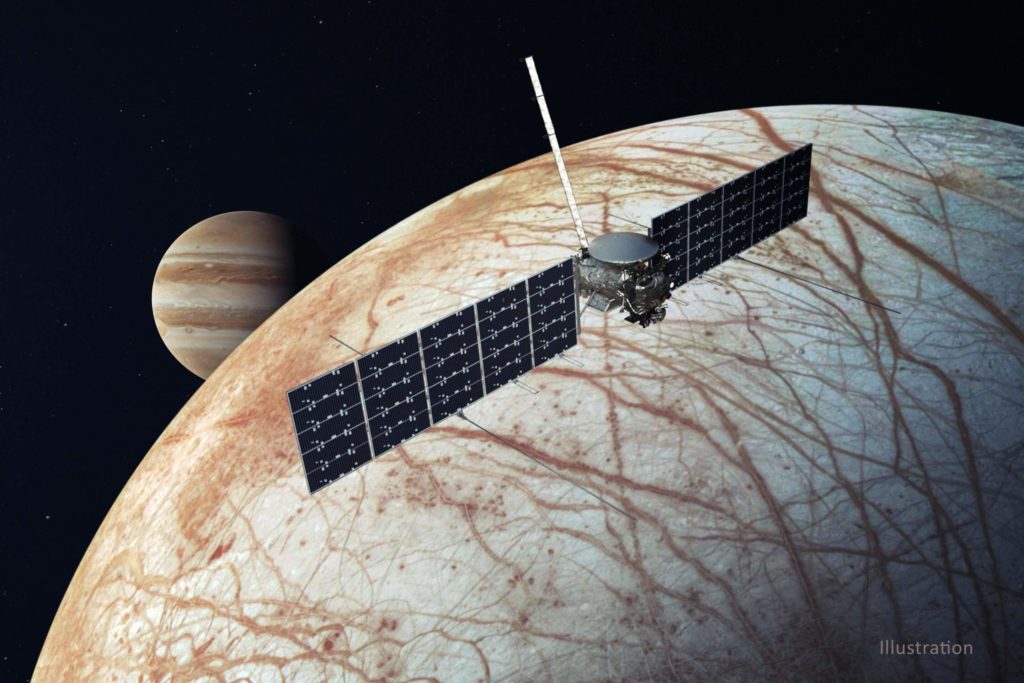A new study published in the August issue of the journal Astrobiology finds that Europa's icy crust
NASA's new orbiter, Europa Clipper,will launch in October 2024. It will fly past the icy moon so scientists can see if it has a suitable habitat for life. Scientists at the University of Texas at Austin are leading the development of the ice-penetrating Europa Clipper radar, which will peer into the ice sheet and the ocean directly below it.
 An illustration of NASA's Europa Clipper spacecraft flying past Jupiter's moon Europa. Photo: NASA/JPL-Caltech
An illustration of NASA's Europa Clipper spacecraft flying past Jupiter's moon Europa. Photo: NASA/JPL-Caltech
As part of this project, scientists wanted to understand howan ice sheet has been built. For an analogy, they turned to Earth, studying the two main ways ice forms beneath the Antarctic ice sheets. One form, “frozen ice,” grows from the surface of an ice shelf. The other, “rocky ice,” forms in cold seawater and drifts upward in flakes, like snow that “falls in the opposite direction.” He ends up trapped under the ice sheet.
The ocean in Europe, like in Antarctica, is differenta very low temperature gradient, which means that its temperature changes little with depth. It turned out that under these conditions, “rocky ice” is quite common. If it is also common in Europa (and a new study supports such a theory), it has big implications for scientists who analyze the composition of Jupiter's moon.
While “frozen ice” cancontain 10% of the salt of the surrounding sea water, “stone” is purer and only 0.1% saltier. Ice with low salt content affects not only the structure and strength of Europa's ice crust, but also the operation of the Clipper radar.
Europe is a rocky world aboutwith the Earth's moon, surrounded by the World Ocean and an ice shell several kilometers thick. It is the sixth most distant moon of Jupiter from the planet and the smallest of the four Galilean moons.
Read more:
"James Webb" sent a photo of the collision of two huge galaxies
"Useless" bacteria on Earth will provide life to the colonists of Mars
On the pyramid in China found a portrait of the "king of ancestors". He ruled over 4,000 years ago